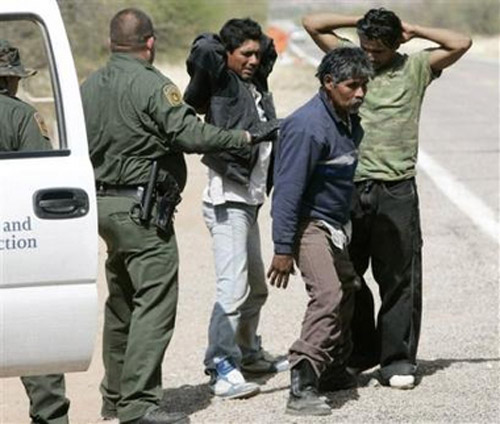
After the American Revolution and the finalization of the American Constitution there was to be an established code of naturalization. AS per the Constitution, Congress had to establish a uniform rule of naturalization and did so on April 14, 1802 by an Act of Congress.
This Act contained certain provisions in favor of aliens residing in the United States prior to the act that allowed for citizenship. The act stipulated that any alien arriving in the United States after the latter period had to comply with the following before he could be admitted to the rights of citizenship:—
1. He shall declare on oath or affirmation, in some competent court, at least three years before his admission, that it was, bonafide, his intention to renounce for ever all allegiance to any sovereign or state of which he was a subject.
2. He shall swear or affirm that he will support the Constitution of the United States.
3. He shall satisfy the court that he has resided within the United States at least five years, and within the State or Territory where such court is held at least one year, before he can be admitted. It must further appear to the satisfaction of the court that he has behaved as a man of good moral character, attached to the principles of the Constitution, and well disposed to the good order and happiness of the United States.
4. He shall renounce every title of nobility held by him. Subsequent laws modified this act in the following important particulars :—
A residence in the United States for the continued term of five years, without being at any time without the territory of the same, was required of aliens by an act approved March 3, 1813. This provision, however, was repealed by the act of June 26,1848.
There is a long history of immigration and immigration legislation. Our immigration policies have unfortunately had very negative consequences, for example, the “Chinese Exclusion Act of 1882″ barred Chinese from entering the U.S. and “The Gentlemen’s Agreement” (1907) to regulate Japanese immigration into the country. In 1892 the immigrant processing center Ellis Island opened for Europeans primarily and helped to process about 12 million immigrants over the next 30 years. Each new immigrant had to pass a physical and pay a “head tax.”
The first major step to curb immigration dealt with what was seen as persons who arrived and were physically and mentally incapable of taking care of themselves. The Immigration Act of 1917 increased the entry tax to eight dollars. Then in 1924 The Johnson-Reed Act limited annual European immigration to 2 percent of the population of Europeans in the United States in 1890. After the outbreak of war in 1940, The Alien Registration Act passed and required the registration and fingerprinting of all aliens in the United States over the age of 14.
The Immigration and Nationality Act (McCarran Walter Immigration Act) of 1952 affirmed the national-origins quota system of 1924 and limited total annual immigration to one-sixth of one percent of the population of the continental United States in 1920. It also included an exemption for spouses and children of U.S. citizens born in the Western Hemisphere from being a part of the quota.
Other reforms:
1965 – Immigration and Nationality Act repeals the national origins quota system and gives priority to family reunification.
1986 – The Immigration Reform and Control Act gives amnesty to approximately three million undocumented residents and provides punishments for employers who hire undocumented workers.
1990 – The Immigration Act of 1990 increases the number of immigrants allowed into the United States each year to 700,000.
1996 – The Illegal Immigration Reform and Immigrant Responsibility Act strengthens border enforcement and makes it more difficult to gain asylum. The law establishes income requirements for sponsors of legal immigrants.
The Personal Responsibility and Work Opportunity Act, Congress makes citizenship a condition of eligibility for public benefits for most immigrants.
1998 – The American Competitiveness and Work force Improvement Act increases the number of skilled temporary foreign workers U.S. employers are allowed to bring into the country.
The history of this country has always been complex in terms of it relationship to immigrants and natives. For a nation of immigrants we often did not tolerate newly arriving ones. We also forcibly immigrated hundreds of thousands of Blacks.
So I will avoid a blanket statement that attempts to cover the current issue of immigration. What I will say is no sane person can possibly be against immigration. We are a country of constant immigration. What the real issue centers on is Naturalization and the legal process that was good enough for my family (on my father’s side, my mother’s side goes back to the Mayflower) when it arrived penniless before WW2, and is good enough now for newly arriving immigrants.
For some fun, take a basic United States Citizenship quiz.
Hey Chris. Interesting post. One of my daughter in laws, who was born in the Dominican Republic but who grew up in Puerto Rico, came to the U.S. when she was 19 and spoke only broken English. She was able to land a job in N.VA by bluffing her way through the interview ;o).
She went through the process of becoming a citizen (I recall quizzing her some before she went for the test), and is quite proud of her citizenship. She is now the proud mother of 2 of my grandsons and a licensed real estate agent. Common sense and human nature tells us that when you earn something fair and square, it means so much more to you.